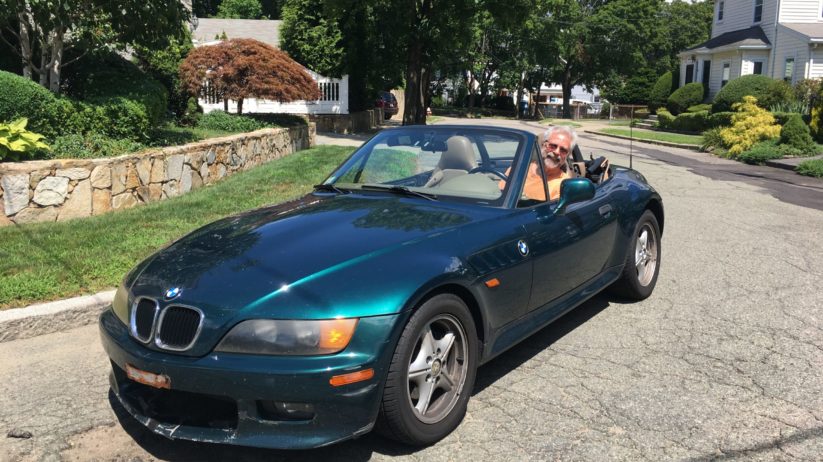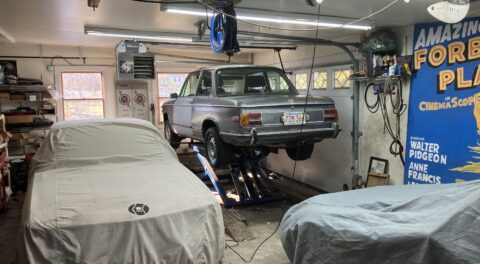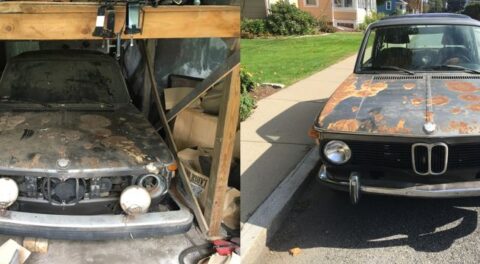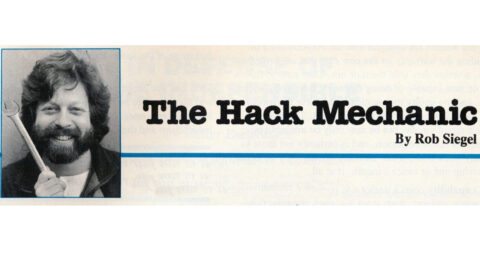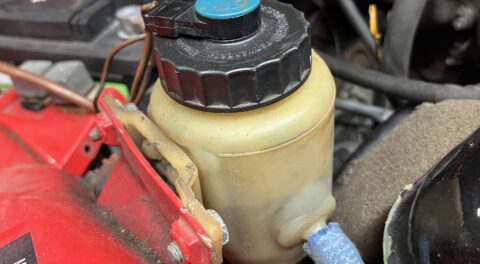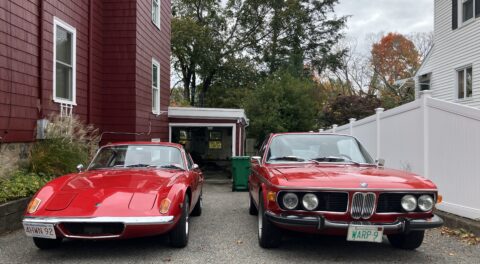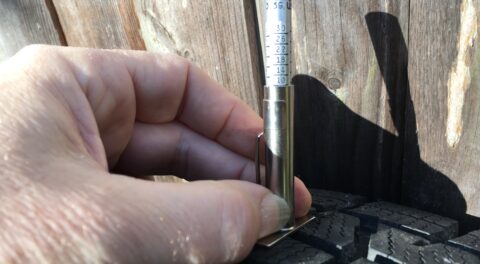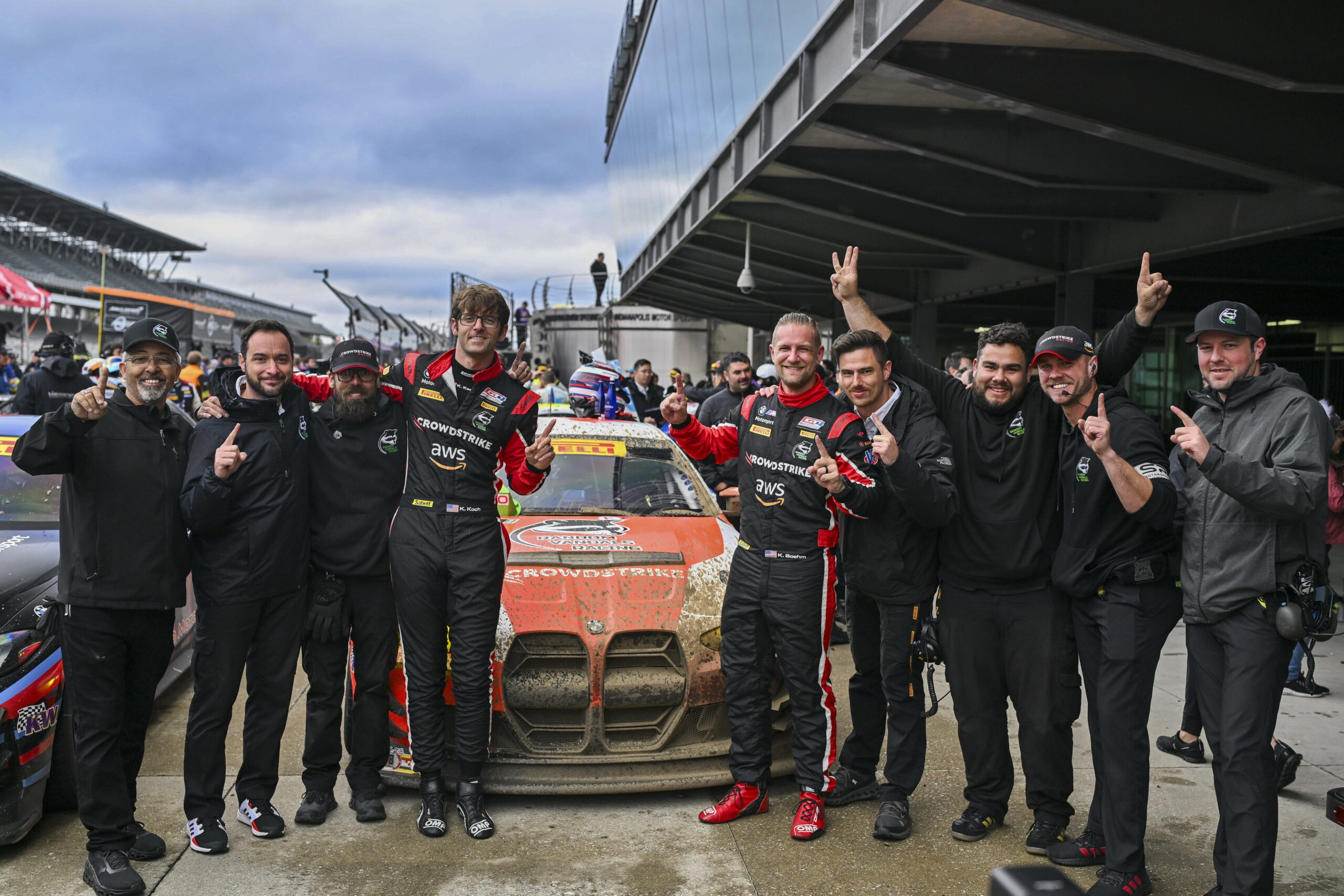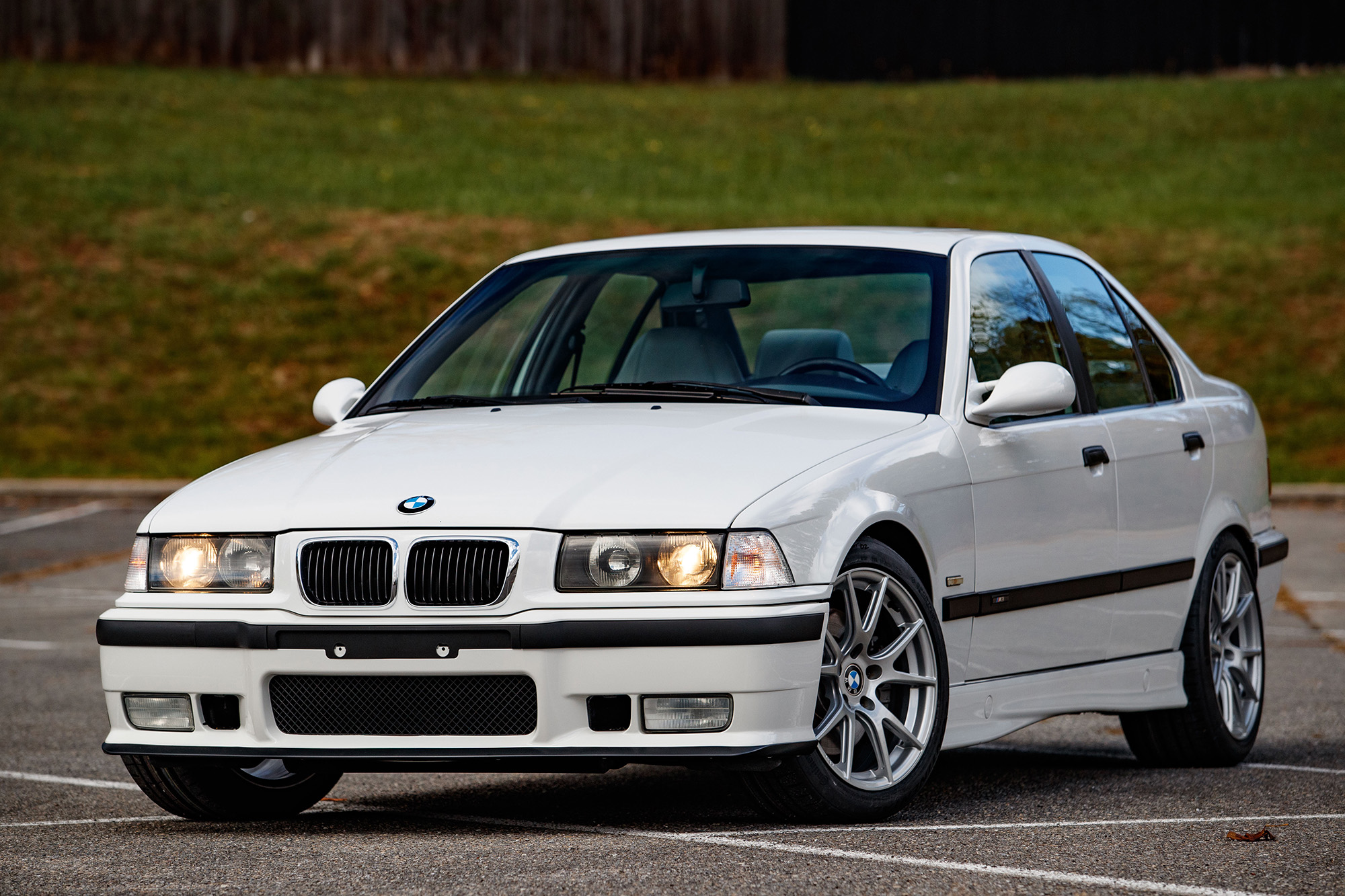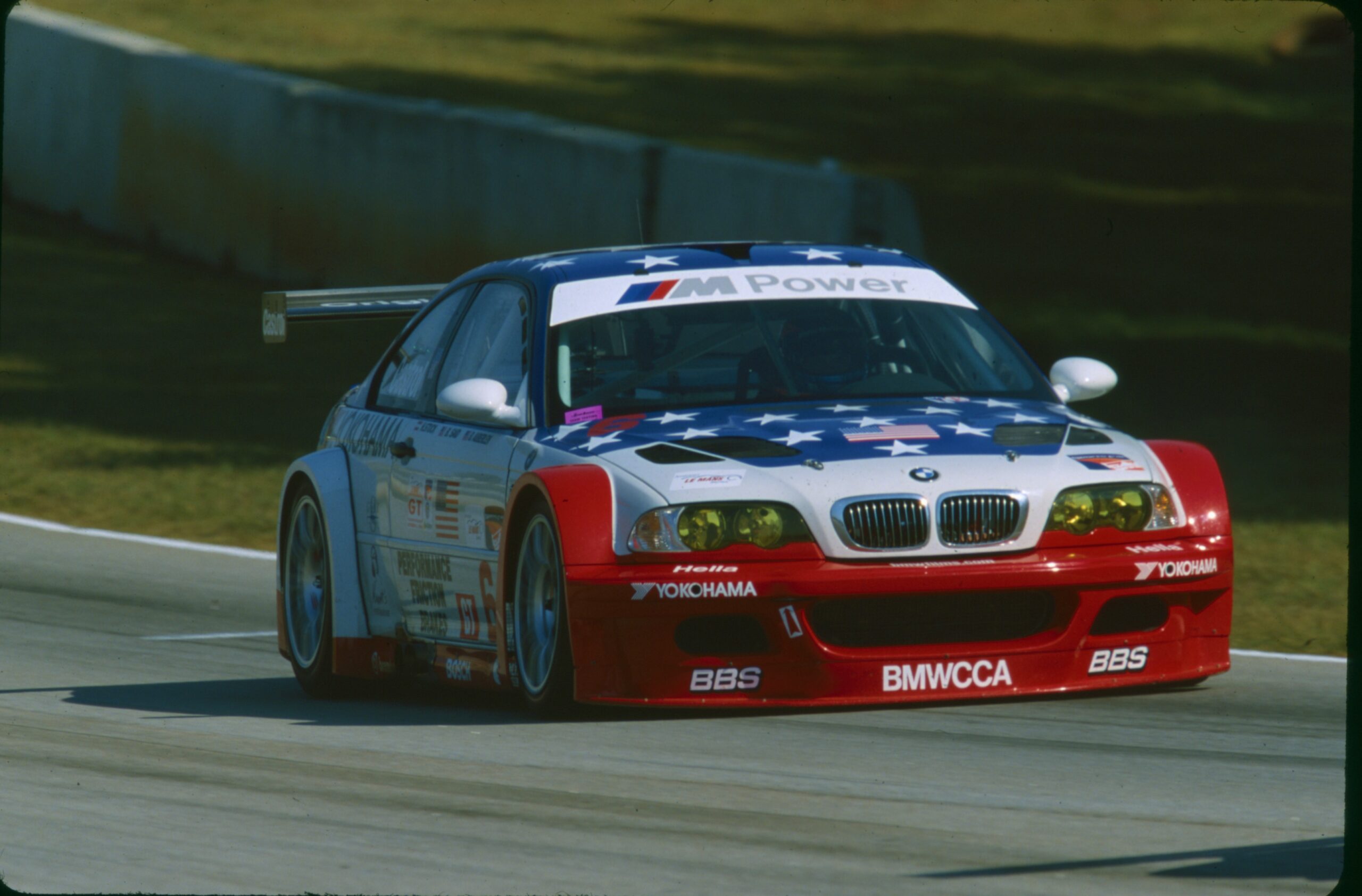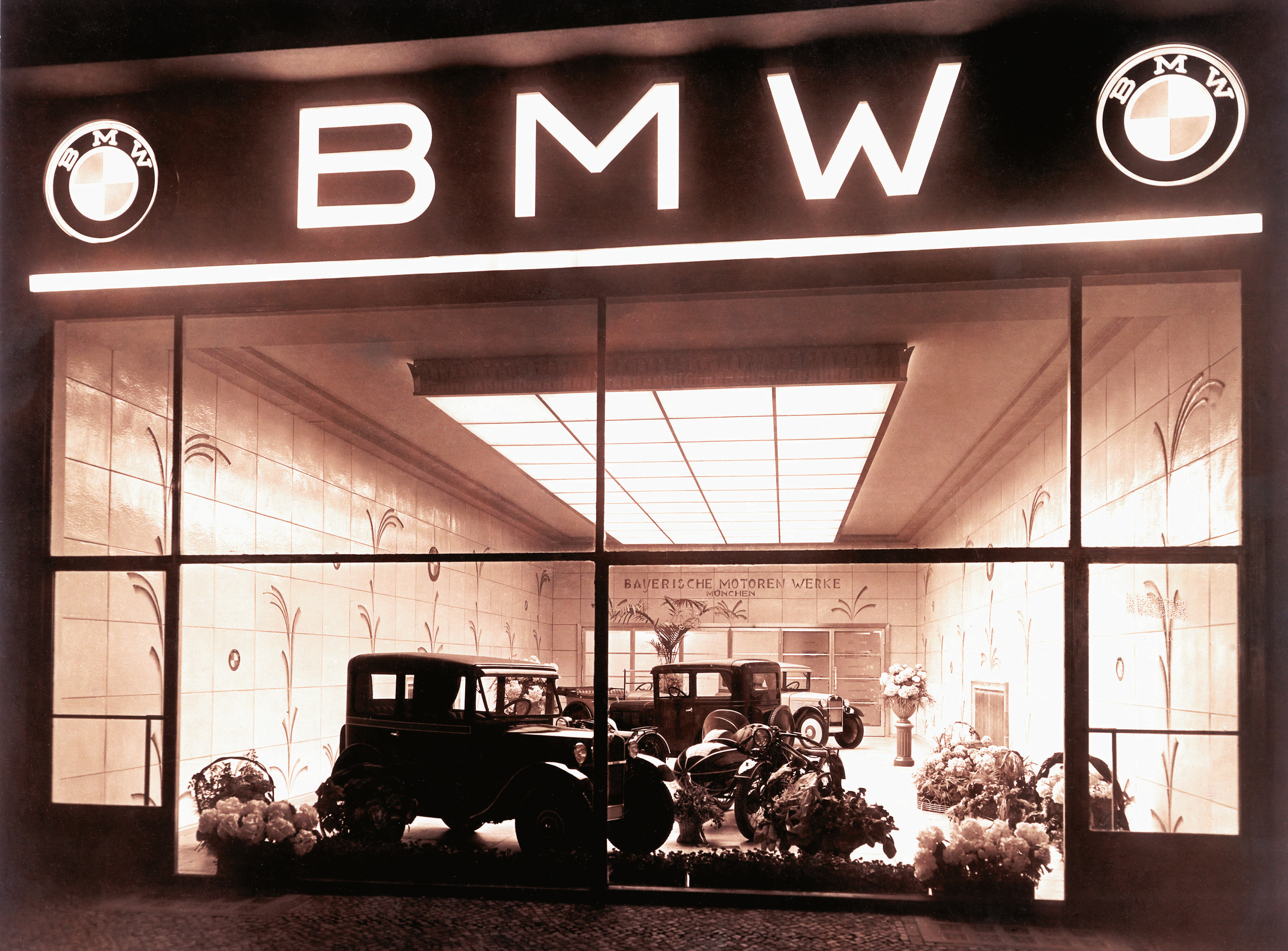Last week I replaced the missing accelerator grommet in Zelda, my former Z3—now owned by my friend Kim—and wrote, “And with that, done. Fixed—completely. Running Z3, happy friend. My small corner of the universe is in balance.”
I spoke too soon.
Well, there was another repair that was a similar quick hit-and-run like the grommet. The pivoting spindles in both of Zelda’s mirrors—the things that let you swing the mirrors inward so that they won’t get whacked by passing cars if the car is parked on a narrow street—were broken. They were broken when I sold the car to Kim. I’d wrapped the stalks in clear packing tape so they wouldn’t flop around. It was factored into the sale price; I’d said that we could talk about me fixing them, but then I forgot all about it.
The packing tape failed, and Kim’s son re-wrapped them in gray duct tape, the adhesive of which got everywhere before the duct tape itself failed. It was a mess.
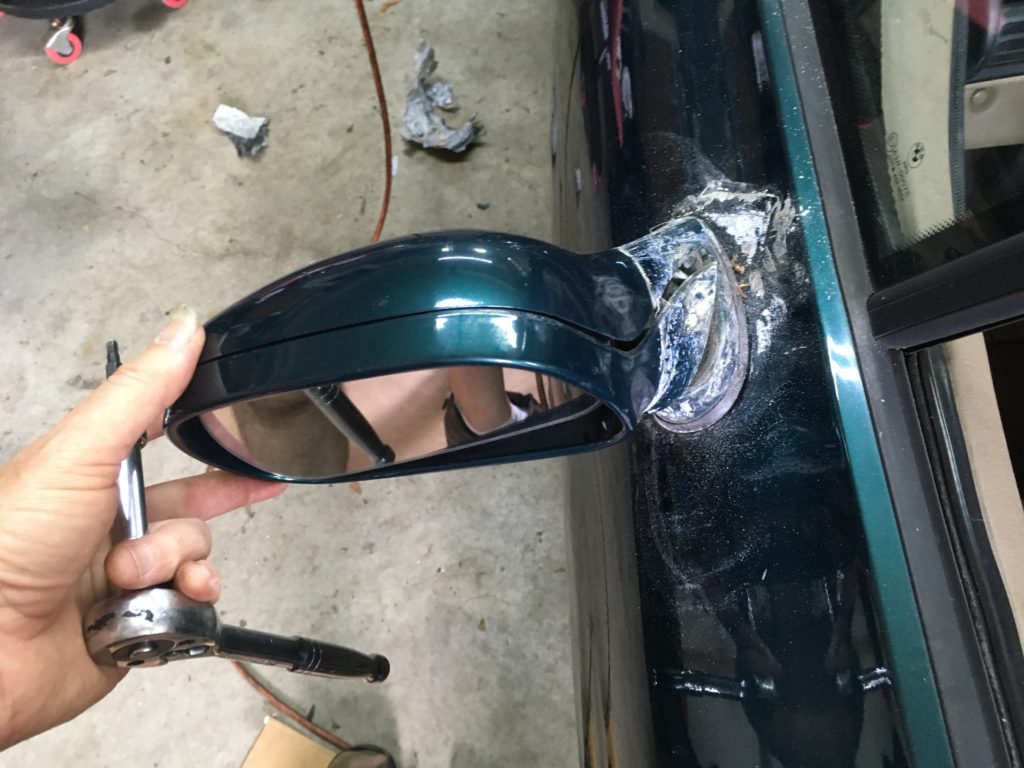
The driver’s-side mirror with the duct tape removed: yuck.
So while the car was still sitting in my garage, I texted Kim. “While Zelda is here, do you want me to fix the mirrors?”
“That’d be great,” she said.
There are three ways to deal with broken mirror spindles. A British company called X8R makes a replacement spindle for the Z3 mirror. It’s available from U.S. distributors on eBay and Amazon for about $150 shipped. They also have a very thorough step-by-step video on the process. I thought that choosing this path was a natural, but when I watched the video, I realized that completely disassembling both mirrors and transferring the guts over would be a fair amount of work and was only worthwhile if the rest of the components were good. I pulled both mirrors off the car and inspected them, and found that the case of the driver’s-side mirror was cracked.
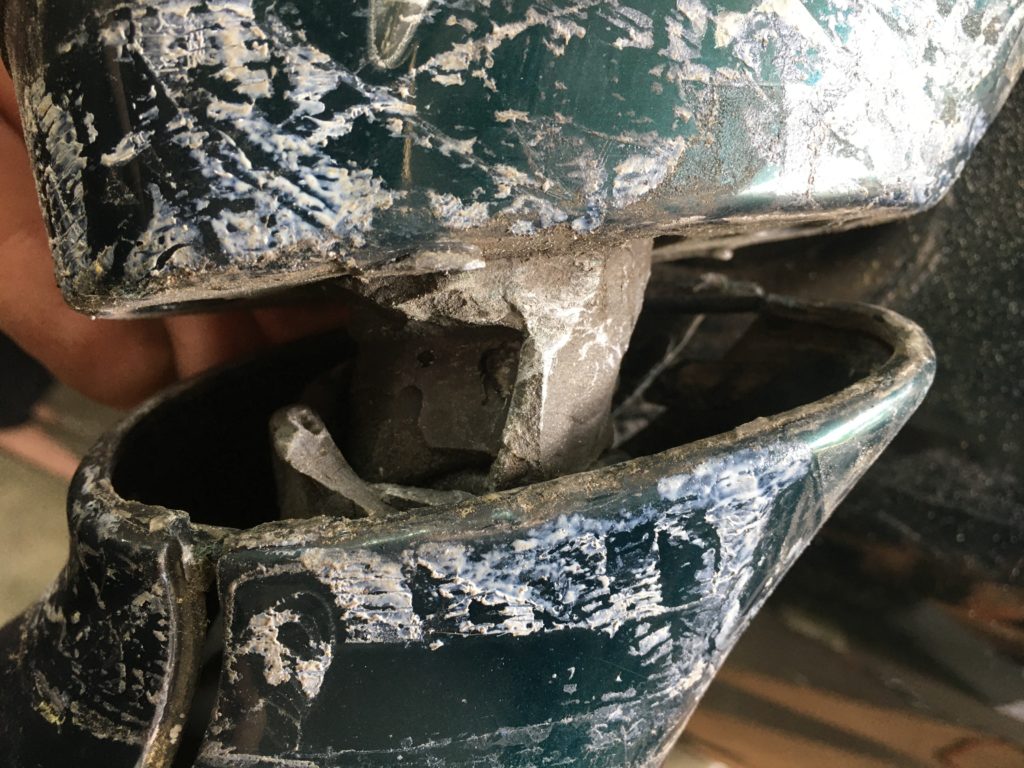
Close-up of the broken spindle on the driver’s side: It looks like someone tried once before to fix it with something like J-B Weld SteelStik.
So that left buying used mirror assemblies and repainting them the correct Boston Green of the Z3, or trying to thread the needle and see if I could find two Boston Green assemblies. The latter option was optimal, as I was doing this as a favor for Kim, and buying something I could simply bolt on was preferable—not to mention the fact that anything I’ve ever painted comes out looking terrible. But I thought that the odds of finding two click-and-buy Boston Green mirror assemblies were slim.
I searched on eBay and found one Boston Green Z3 mirror, a passenger-side assembly in Pennsylvania for a high asking price ($190). I then widened the search to just “green” and found a driver’s-side mirror in Sacramento for $140 that sure looked Boston Green. I messaged the seller and asked if he could confirm that the color was Boston Green and that the mirror had a good spindle, and said that, if so, I’d buy it immediately. He responded yes to both questions.
I then messaged the seller in Philadelphia (from the looks of their inventory, a salvage yard) and said, “Honestly, I need two Boston Green mirrors. I found the driver’s side. You have the passenger side. If the spindle is good and if you lower your price to $150, I’ll buy it right now.”
There are two ways a seller can react to this. One is to think, “What a moron! The guy just admitted that he has no choice but to pay full price for mine!” The other is to check his or her database, see that the item has been on eBay for a year, and accept my offer. He did the latter. At 5:37 p.m. on a Friday, I clicked and bought both mirrors, smiled at my good fortune, and chuckled to myself at the symmetry that the left mirror was on the Left Coast and the right was on the Right.
Knowing that they were on the way, I pulled both mirrors off Zelda in order to get a jump on the project. The mirrors themselves each attach from the outside with two Allen-head bolts which are accessed by rotating the spindle housings (which was easy, since they were, you know, broken).
Unfortunately, in order to undo the electrical connector for the power mirrors, you need to pull off the door card.
This went pretty quickly, though: Slide off the trim surrounding the door-release lever, remove two Torx-head fasteners (one behind the airbag-warning trim, the other behind the window-motor switch), pop off the door clips, remove the connector, pull the mirror cable out, and off comes the mirror.
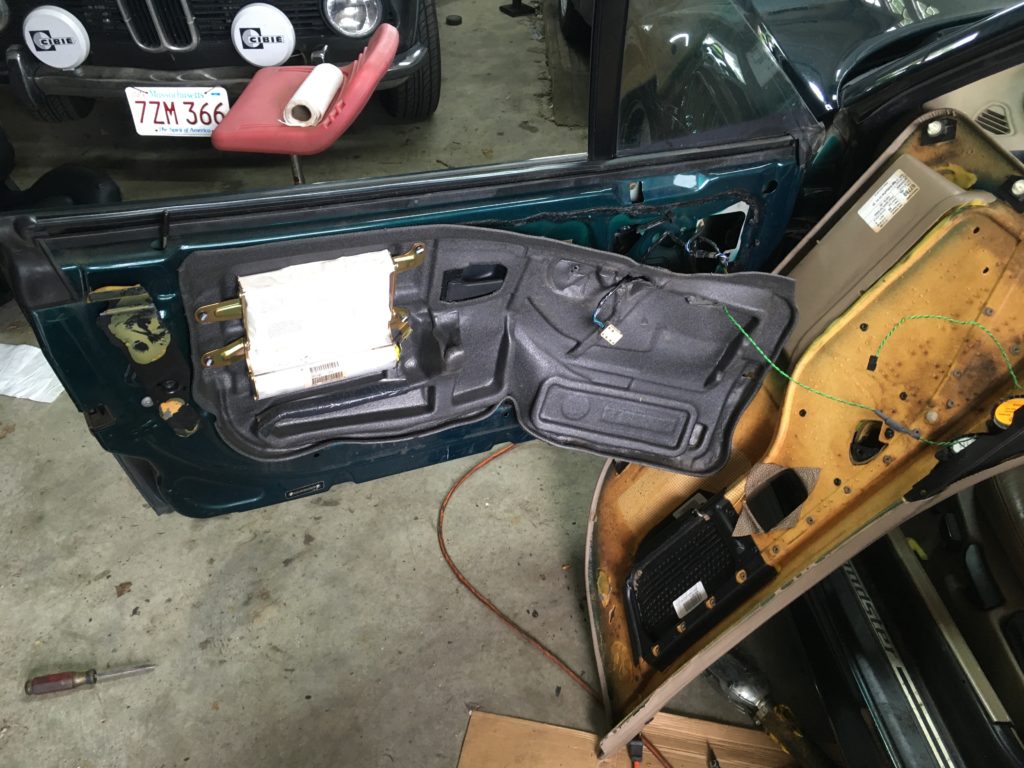
All to disconnect the mirror’s motor connector.
On Monday a package arrived at my door. From the quick delivery, I assumed that it had to be the passenger-side mirror from Philadelphia. I was stunned to find instead that it was the driver’s-side mirror from Sacramento. Then I thought about it: Due to the time difference, the fellow in Sacramento received the order, boxed it, and got it to the post office before close of business, and the Priority Mail two-day shipping that was included in the auction did its thing (I sent him a heartfelt “thank you” message on eBay). In contrast, my order arrived at the Philadelphia vendor after close-of-business on Friday, wasn’t handled over the weekend, and wasn’t processed until the end of the day on Monday.
I ran into the garage with the mirror, and had it installed and the door buttoned back up in fifteenminutes.
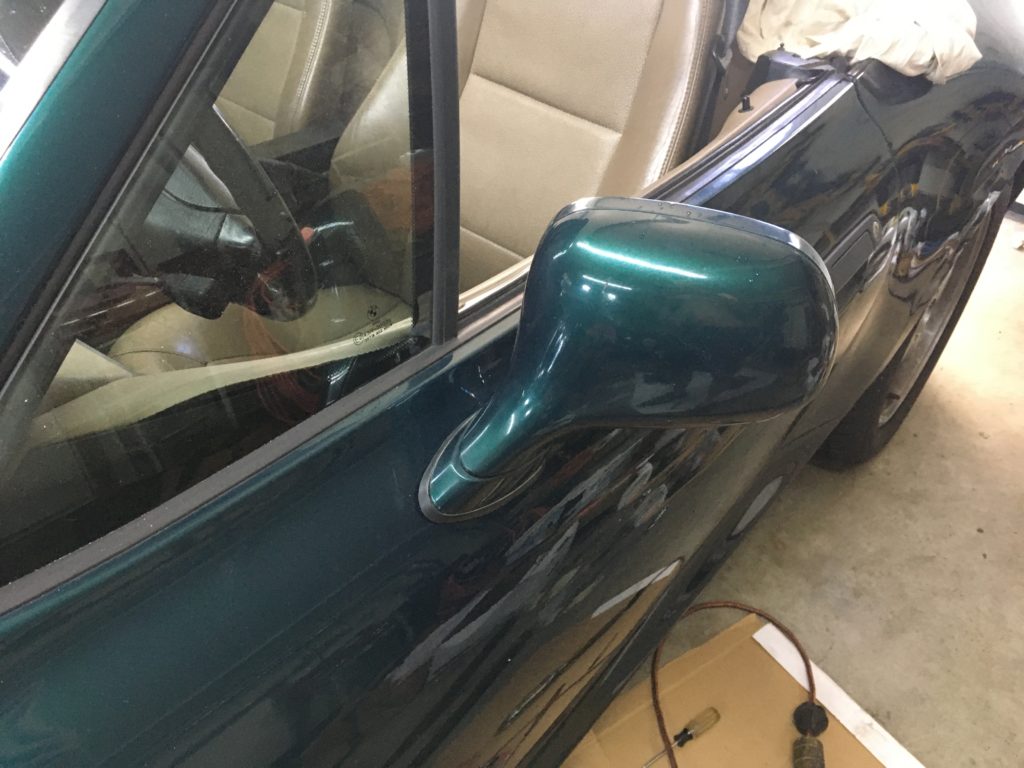
As the B-52’s said, “Now, doesn’t that make you feel a whole lot better?”
The mirror from Philadelphia didn’t arrive until Thursday, which was initially funny, but became annoying, as the presence of the Z3 in the garage had kicked my Z3 M coupe outside to the driveway. Plus, the Z3 was occupying the spot in front of the door, blocking both the 3.0CSi and Bertha, my ratty 2002.
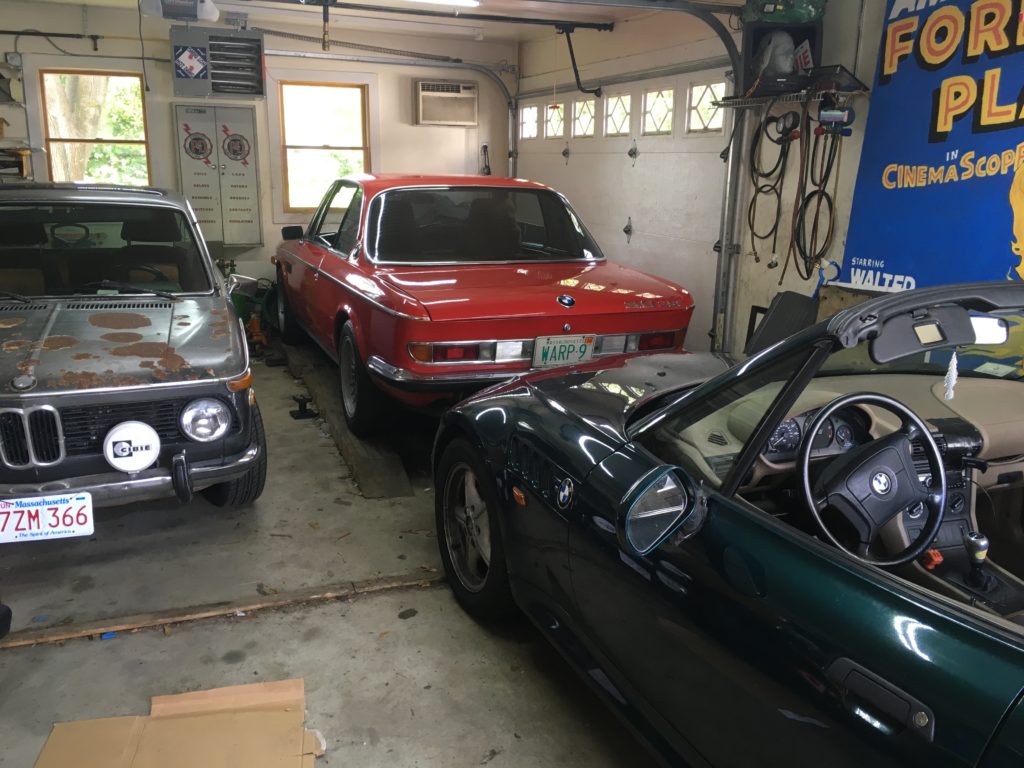
I suppose this was a happy problem to have. I think Zelda was enjoying both the attention and the company.
While I was waiting for the other mirror, hot humid weather moved into Boston. When it finally broke, and there was a beautiful evening with a cool breeze, I realized that I had a roadster sitting in my garage, and all I had to do to drive it was toss the passenger panel (which was hanging by the speaker wires) inside and shut the door.
But when I started the Z3, mashed the clutch, backed it out of the driveway, and began to drive off, I realized that there was a problem. A variety of clutch-related sounds and shudders made themselves known. There was a rumbling sound with the clutch engaged. There was a chatter on releasing the clutch. And worst of all, there was a snotty metallic rattle in neutral that got worse as you revved the engine up. It probably did all this when I limped it the three right turns from Kim’s to my house the previous week, but at that point the car was still missing the throttle grommet, I idled it over to my house, and the revs were so low that I didn’t notice anything amiss. Now it had a rattle that was bad enough that I made sure the fan, fan clutch, and idler pulleys were all secure.
The quick drive in the Z3 instantly reminded me of why I’d owned it for five years; there’s nothing like that whole-body relaxation response you get driving a zingy little two-seater open roadster. But the snotty rattle was concerning.
When I got home, I listened to the noise closely, holding a piece of tubing to my ear and moving the other end around to isolate the source of the rattle. It definitely seemed to be coming from inside the bell housing. I searched online, and the symptoms seemed to match four possibilities: 1. The throwout bearing going bad (CCA Service Advisor Paul Muskopf said that the clutch slave cylinder slightly pre-loads it); 2. The dual-mass flywheel going bad; 3. The transmission input bearing going bad; or 4. the pin supporting the clutch-release lever breaking and leaving the lever to rattle around.
The problem, of course, is that addressing any of these requires pulling out the transmission, which falls outside the favor-for-a-friend envelope—at least it does these days for me at age 62. I hate to even do it in my own cars.
I put the car on the mid-rise lift and crawled underneath with it running, laying my hands on and around the bell housing and listening with a mechanic’s stethoscope. Noise and vibration were definitely resonating directly with the clutch slave cylinder and not with the transmission case. I thought that this made it very likely that the source was the throwout bearing, less likely that it was the dual-mass flywheel, and unlikely that it was the transmission’s input-shaft bearing. In terms of potential parts costs, this is good—but since the transmission needs to come out for any of them, it hardly matters in terms of actually addressing the problem. Plus, you’d be foolish not to replace the actual clutch disc and plate while you’re in there.
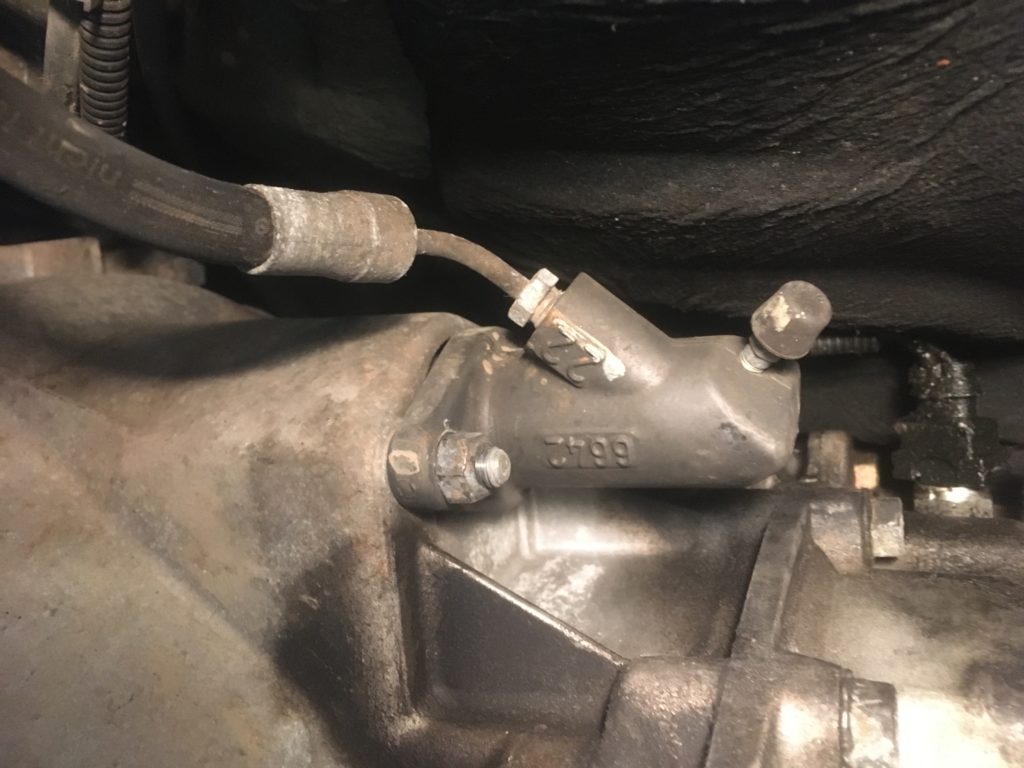
I could feel the clutch slave cylinder.
I’m returning Zelda to Kim on the assumption that light use of the car won’t cause anything to fail catastrophically, and that she can get through the rest of the summer and autumn before action is necessary. I love that I can help keep the car running and drive it once in a while, but the last thing I’d want is to wind up getting it back because it was unsellable due to the cost of a needed clutch job. That would not keep my small corner of the universe in balance.—Rob Siegel
Rob’s most recent book, Resurrecting Bertha: Buying Back Our Wedding Car After 26 Years In Storage, is available on Amazon here. His other books, including Just Needs a Recharge: The Hack MechanicTM Guide to Vintage Air Conditioning, are available here on Amazon. Or you can order personally inscribed copies of all of his books through Rob’s website: www.robsiegel.com. His new book, The Lotus Chronicles, will be available in the fall.

